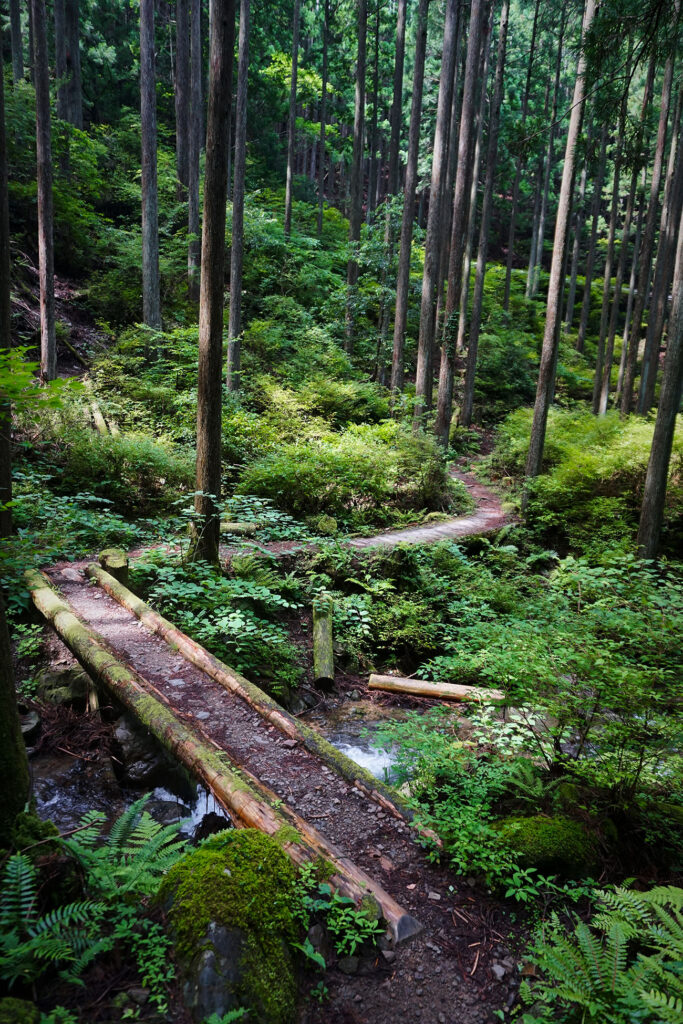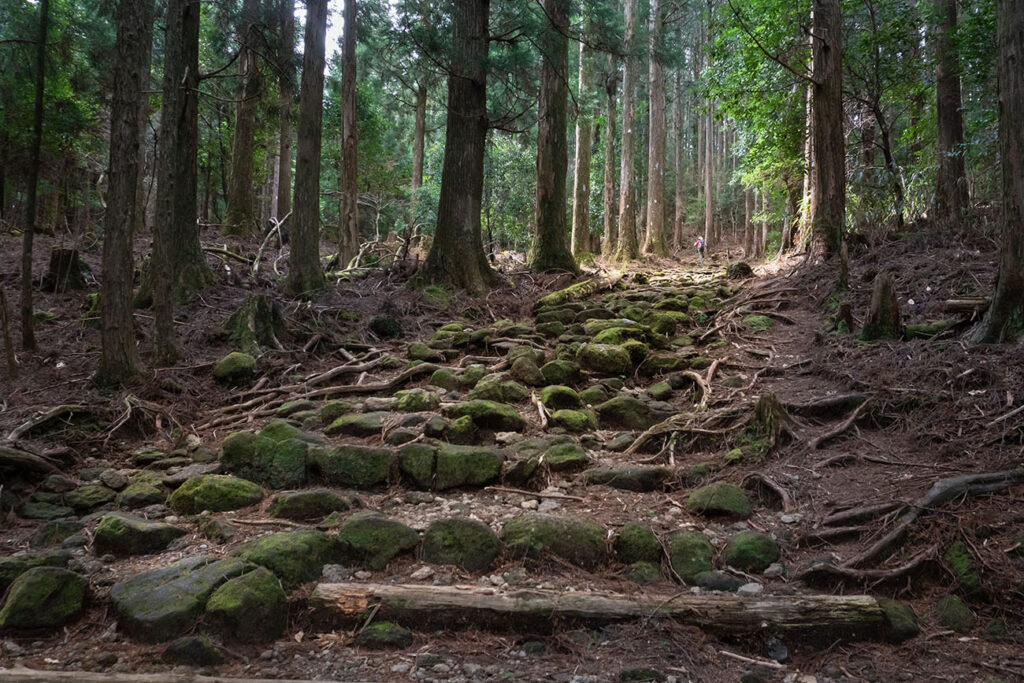
The Three Trails of Kumano Kodo
The sacred trails of Kumano Kodō (熊野古道) are a series of ancient trails used for the pilgrimage to the sacred site Kumano Sanzan, the Three Grand Shrines of Kumano. The Kumano Kodō and Kumano Sanzan, along with Koyasan and Yoshino and Omine, are part of UNESCO’s designated World Heritage Sacred Sites and Pilgrimage Routes in the Kii Mountain Range of Japan.
Trail crossing a stream
The earliest records of the routes can be traced back to the early 10th century. The Kodo (“old ways”), have been used by people who go on pilgrimage for more than a thousand years. The Kumano Kodo routes were developed as a means for people to move between the sacred areas on the Kii Peninsula. By the 12th century, the popularity of the Kumano Sanzan made the trails more than just a path to the Three Grand Shrines; they also became a religious experience with the three pathways being difficult and quite dangerous mountain terrains.
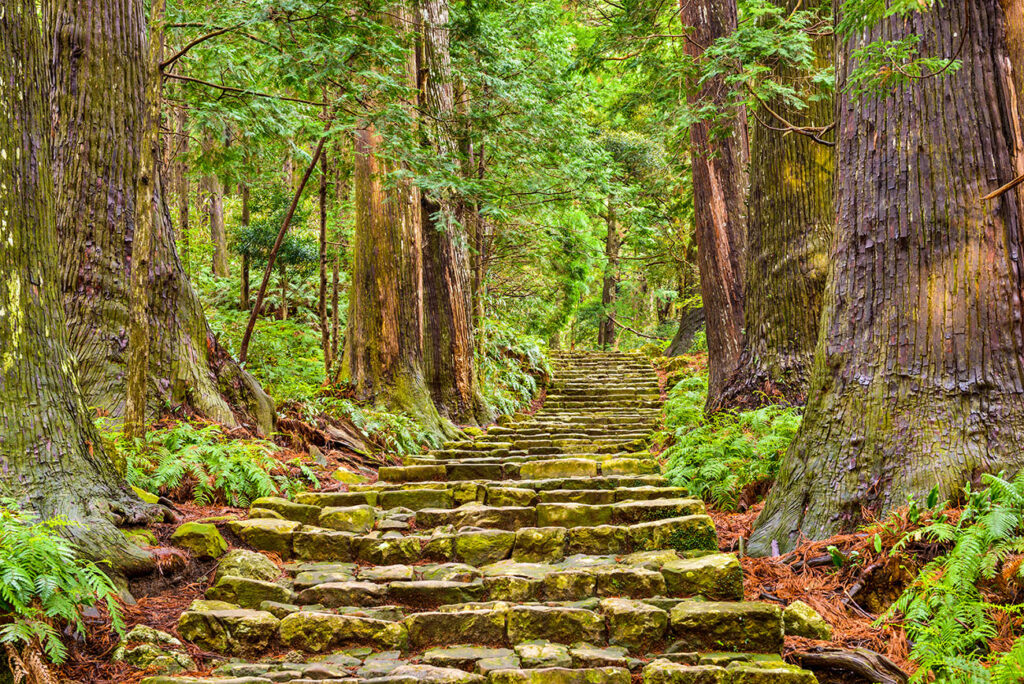 Nakahechi – “The Imperial Route”
Nakahechi – “The Imperial Route”
The Nakahechi pilgrimage route is the route favored by the emperors and nobles since the 10th century. It is also the most popular amongst foreign visitors and locals alike. It is a relatively easy hike that leads through lush forest landscapes and villages. The Nakahechi route begins from Kii-Tanabe on the western side of the Kii Peninsula crossing the mountains of the Kumano grand shrines at Hongu and Nachisan. Along the trail, quaint villages offer lodgings for weary pilgrims to rest and enjoy the serene surroundings and be in touch with nature.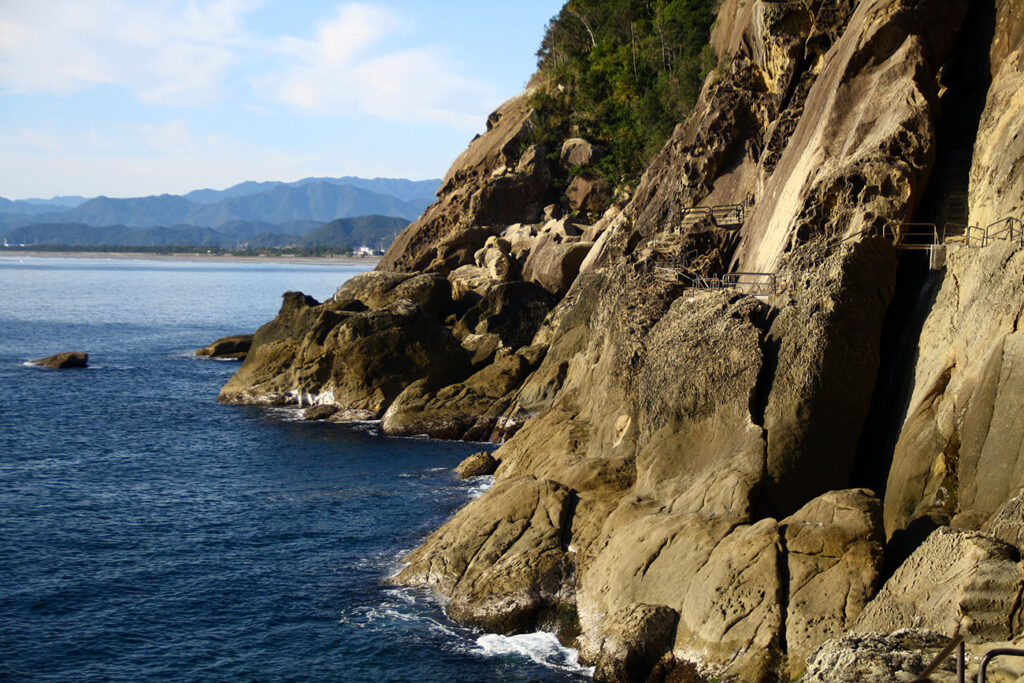
Onigajo or Devil’s Castle
Ohechi
The Ohechi trail was once considered to be the most scenic pilgrimage route considering it runs along the southern coastal area of the Kii Peninsula. This was the trail taken by ordinary people and artists who took the time to enjoy the views of the Kareki-nada and Kumano-nada seas. The Ohechi trail connects Kii-Tanabe with the Fudarakusanji temple situated close to the Kumano Nachi Taisha, one of the three Kumano grand shrines. Today, modern roads have been built over a major part of the original Ohechi pilgrimage route, but some portion still maintain their scenic beauty.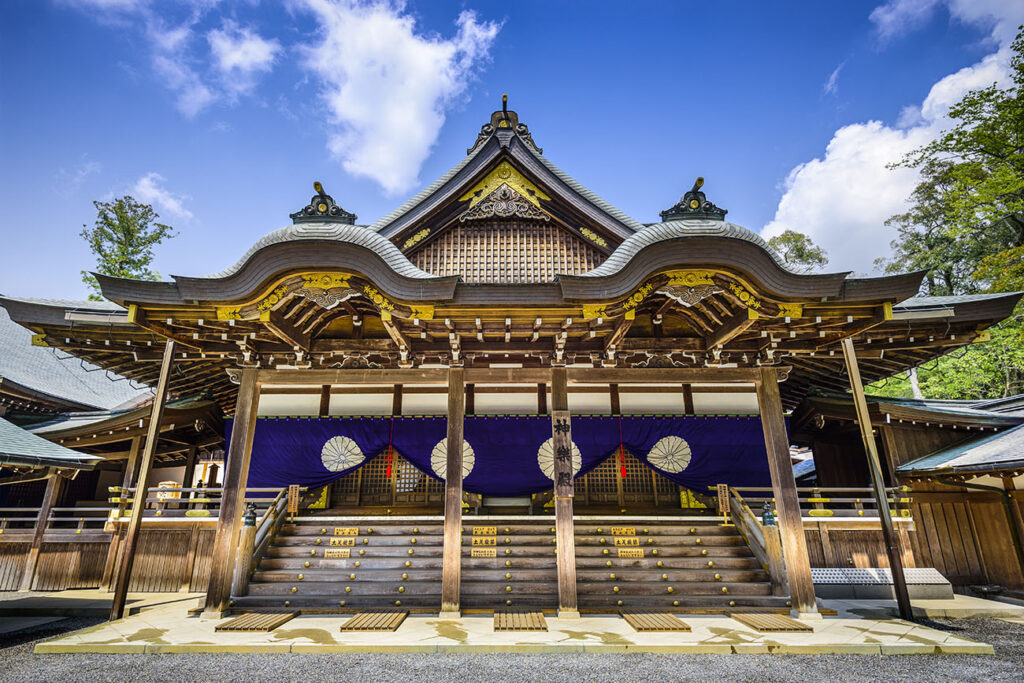
Ise jingu shrine
Iseji – “The Eastern Route”
The Iseji pilgrimage route is 170km long and runs along the east coast of the Kii Peninsula between Ise jingu shrine where the trail begins, and the Kumano Sanzan temples. Its popularity rose during the Edo period (1603-1868) with the growing number of pilgrims visiting the Ise jingu shrine. The Iseji route passed through the most beautiful landscapes from bamboo forests, beaches along the coast of the Kii Peninsula and, village rice paddies. The trails have paved paths to prevent erosion and there are some hills that can be challenging along the way.
